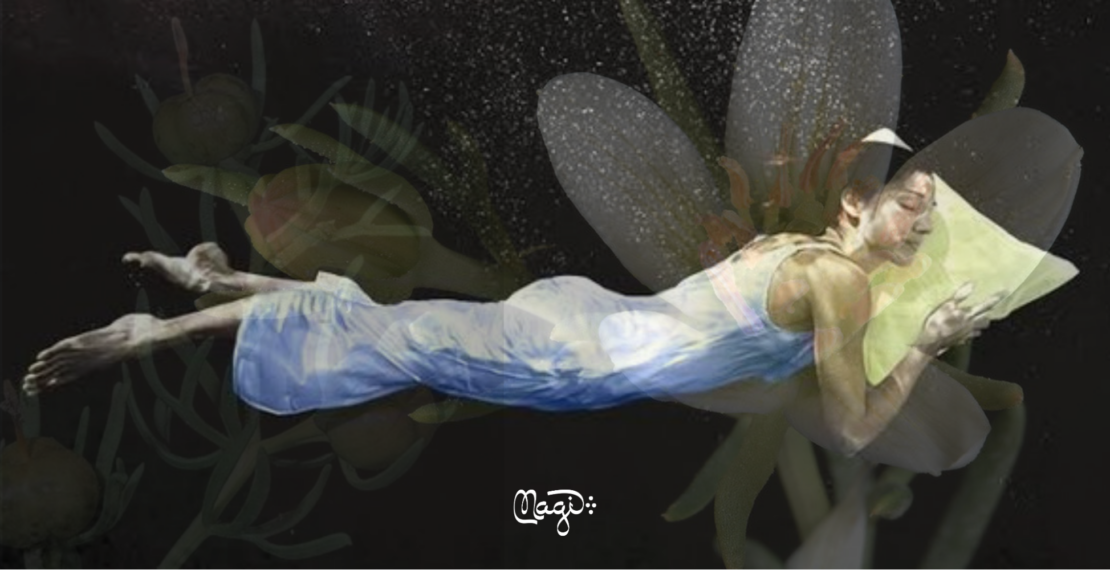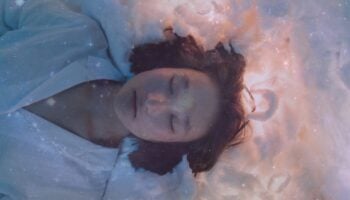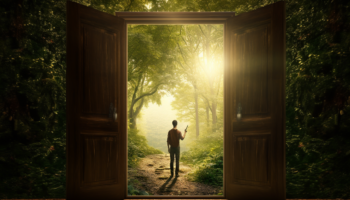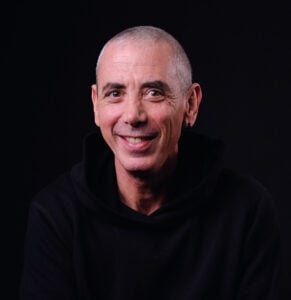About the Author: Shauheen Etminan is the founder of VCENNA, a biotech company specializing in natural drug discovery and development for mental health. He is a repeat founder, scientist, researcher, and product developer dedicated to integrating ancient Eastern knowledge in medicine and mysticism into modern science to develop more holistic wellness solutions for today. Shauheen holds a Ph.D. in Chemical Engineering and co-founded Magi Ancestral Supplements.
Dreaming and dreamlike states have been entangled with inner journeys and long practiced as tools for greater awareness and spiritual awakening among mystical traditions. Indigenous and shamanic traditions often involve rituals, dietas, isolations in nature, and plant medicines leading to trance states where dreams and visions occur.
Ancient Zoroastrian priests, magi drank the elixir of truth, Haoma, to access the realm of after-death through dreams.
Kabbalistic Jewish practices, focusing on the Torah and Hebrew alphabet, can induce dreamlike altered states. Sufi muraqabeh meditation involves quieting the mind and focusing inward, leading to insightful dreamlike states. Tibetan Buddhists practice dream yoga to gain awareness in the dream state, which leads to lucid dreaming, where profound spiritual insights and awakening can occur.
Besides, dreams have been used to heighten creativity. Many artists, writers, and scientists report using lucid dreaming and hypnagogic dreamy states to be more innovative in their work and develop new ideas. MIT Media Lab researchers have been developing wearables that extend the duration of hypnagogic dreamlike states to augment human creativity. Embodied Imagination (EI) has been developed and practiced by psychotherapists as a powerful therapeutic technique to meet with and integrate our subconscious parallels.
In light of the growing interest in therapeutic capacities and expansive experience of psychedelics, and their ties to personally meaningful and mystical experiences, understanding of dreams and dreamy states as tools for therapeutic healing and portals for raising human consciousness are receiving more attention and gaining momentum.
Non-Chemical and Beta-Carbolines Dreamlike States
Our previous post was concluded by reviewing different practices leading to lucid access to a dreamlike state of consciousness. In this post, we will elaborate on some of these states and focus on lesser-known beta-carboline properties as dream-inducing oneirogens.
Lucid Dreaming
Lucid dreaming is a unique state of consciousness where the dreamer becomes aware that they are dreaming while still within the dream. Lucid dreaming is more prevalent in teenagehood; however, some dreamers carry that experience and skill to later stages of life and keep getting skillful in directing their dreams’ flow! Nevertheless, in most cases, gaining this waking awareness in dreams and a sense of agency comes with practice. Dr. Andrew Holecek, in his book Dream Yoga, walks you through the Tibetan Buddhist dream philosophy, techniques, and steps to gain conscious awareness when you are asleep. Based on Holecek, lucid dreaming is a unique hybrid state of consciousness in which the conscious mind faces the unconscious directly.
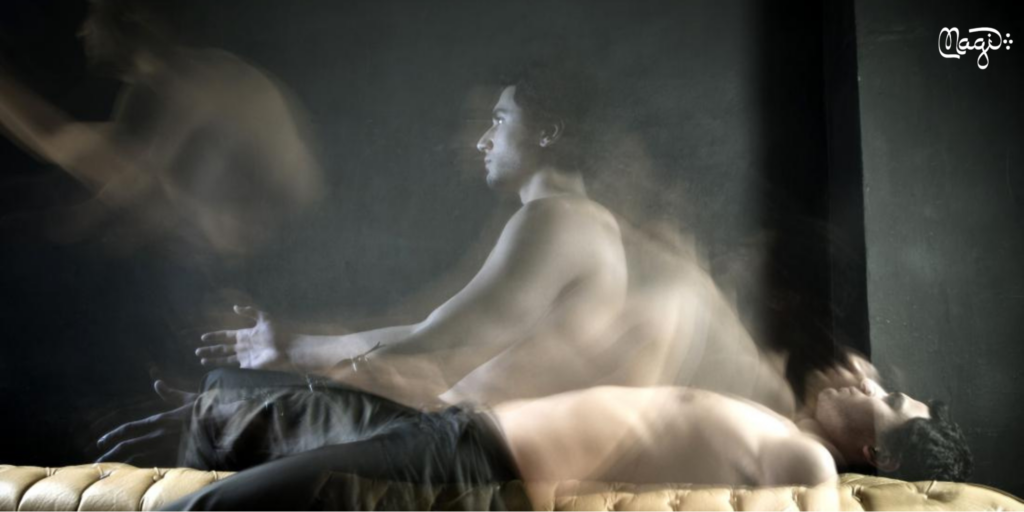
Hypnagogia, Sleep Deprivation, and Micro Naps
Hypnagogia is the dreamlike state at the sleep onset, and hypnopompia is the dreamlike state right after waking up before becoming fully awake. Both states are transitions between wakefulness and sleep, also known as liminal dreaming states [1].

Location of hypnogogic stages over the course of sleep [2]
Zarathustra, the ancient Iranian poet and priest who founded the fundamentals of one of the oldest monotheistic religions, Zoroastrianism, received his revelation in a hypnopompic, dreamlike state.
“Now, the two Manyus at the beginning, which are twins, were heard via a dream: two thoughts, words and deeds, a better and a bad. Between the two, the beneficent choose correctly, not the maleficent”. – Gatha, Yasna 30.3 [3]

Zarathustra, Iranian Poet, Priest and Philosopher (~1200 BC) – Artwork: Mansour Kheirkhah
Sleep deprivation and micro naps have also been paradoxically linked to spurts of creativity, a phenomenon observed in numerous historical figures. For instance, Thomas Edison and Salvador Dalí famously utilized micro naps, deliberately waking themselves to capture the creative insights gleaned from the edge of sleep. Edison is famous for taking micro naps with a steel ball in his hand, so as soon as he fell asleep, the ball dropped and woke him up. This technique, balancing on the brink of sleep deprivation, harnesses the hypnagogic state, a fertile ground for unusual connections and ideas.
In his dreams, August Kekulé, the German chemist, discovered benzene’s unknown and confusing structure could be a ring. He later wrote that “when he dozed, images hinting the molecule’s structure appeared in his mind’s eye. He saw dancing atoms beaded together along an invisible string, twisting in snake-like motion. Then the atoms morphed into an ouroboros, a snake that wrapped itself into a circle, eating its tail.”

Philosophers, scientists, and writers like Aristotle, Albert Einstein, Edgar A. Poe, and Charles Dickens also used the awareness of the hypnogogic twilight zone in search of solutions to their works’ problems or to receive sudden bursts of creativity or mental clarity. Dmitri Mendeleev, the pioneering Siberian chemist, resolved the disjointed bits of the periodic table of elements in a dreamy state:
“I saw in a dream a table where all the elements fell into place as required. Awakening, I immediately wrote it down on a piece of paper.” [4]

Deep Meditation
Deep meditation also enters us into a dreamlike state while awake. However, this state can be reached only through consistent meditation, where the meditator reduces the mind distractions to the minimum or almost zero. Intense meditation practices like Vipassana and Zazen aim to induce consciousness shifts in full awareness.
Plant Medicines
Plant medicines can create dreamlike states, which, depending on their types and experiences, contribute to emotional and psychospiritual transformations. The most well-known oneirogen, which is popularized as a psychedelic, is the Amazonian brew, Ayahuasca. In fact, Ayahuasca is a hypnagogic-psychedelic admixture, where the dreamlike state induces the subjective hybrid effect from beta-carbolines in the bark of Banisteriopsis Caapi and the psychedelic effect by the DMT content in the leaves of Chacruna (Psychotria viridis). While beta-carbolines are publicly perceived as compounds that inhibit the deamination of DMT, it is documented by some ethnobotanists, including Richard Spruce and Richard Evan Schultes, that only the vine (beta-carboline extract of B. Caapi) was consumed as Ayahuasca by shamans in the 1700s.

Ayahuasca’s Subjective Experience, a Superposition of Psychedelic & Hypnagogic States
The Ayahuasca brewed by the Santo Daime Church is usually beta-carbolines heavy. In a recent study by Doss et al. (2023) [5], the content of DMT in the Damie (brew) taken by participants was about 5% of the typical content in Ayahuasca brews. The Ayahuasca subjective effect is perceived as a hybrid experience of being dreamlike while our neurons are firing on a serotonergic boost of DMT to process thoughts and emotions more extensively. The dreamlike state is what presents the archetypal and mythical visions of Ayahuasca. If only beta-carbolines are taken, the subjective effect is a dreamlike state in full lucid wakefulness. Prof. Claudio Naranjo, the developer of Enneagram of Personality, in his book The Healing Journey [6], interviewed patients who were injected with an IV dose of beta-carbolines (10-methoxy-harmaline) and showed how these patients underwent spontaneous epiphanies in critical aspects of their lives, only with a single dose and a few minutes after the injection.

Claude Rifat distinguishes between substances that induce dreams and those inducing dreamlike hypnogogic states. Drugs that cause an increase in the production of hypnogogic or hypnopompic states (liminal state) are referred to as hypnogogens or pre-oneirogens [7]. Those inducing dreams in asleep mode are called “true oneirogens”, like so-called dream herbs, Mugwort or C. zacatechichi.
Beta-Carbolines as Pre-Oneirogens and Their Ancestral Use
Based on the legacy of dreamy states in different wisdom traditions promoted to induce inner journeys of self-discovery or otherworldly voyages, the best approach to searching for these oneirophrenic substances is to look into their ancestral use. Beta-carbolines have been found in ritualistic psychoactive potions/brews of three ancient traditions:
- Amazonian shamanism – Ayahuasca vine from the bark of Banisteriopsis Caapi
- Ancient Iran’s Zoroastrianism – Haoma, the Elixir of Truth from the seeds of Espand (Syrian rue, or Peganum harmala)
- Ptolemaic Egyptian – Ritualistic potion from the seeds of Syrian Rue
These psychoactive ritualistic drinks were always in the format of an extract admixture that the shaman or priest offered in different settings.
Ayahuasca
The famous Amazonian brew is primarily known as the combination of two plants, the beta-carbolines vine extracted from the sturdy twisted barks of B. Caapi and DMT from the subtle leaves of Chacruna. Each lineage and shaman makes their brew differently, with different proportions and other plant additives. Kaasik et al. (2021) [8] analyzed 102 different brews of Ayahuasca and characterized their constituents. The addition of deliriant tropane alkaloids like datura and anxiolytics like tilo leaves have been reported.

Barks of Banisteriopsis Caapi, rich in Beta-carbolines Harmine and Tetra-Haydro-Harmine (THH)
Haoma
There has been long speculation about the botanical identity of the Vedic Soma and Avestan Haoma. David S. Flattery, in his pioneering book Haoma and Harmaline [9], suggests separating Soma and Haoma studies due to their different geographies and traditions, even though both belong to Indo-Iranian shamanic practices. Based on ancient Avestan texts, Haoma was an extract prepared and consumed by the priests of the pre-Zoroastrian era and Zoroastrians for otherworldly journeys. At the McKenna Academy ESPD55 conference, I reviewed the dreamlike, otherworldly journeys of Zoroastrian magi and shown that beta-carboline pre-oneirogens, extracted from the sacred plant Espand, could be the best fit for the reported subjective effects among different plant candidates. As noted in Avesta, Haoma also had different kinds and was used in different settings [10]. The addition of ephedra and atropine molecules from Black Henbane is noted in other Haoma-driven potions.

Wildly Grown Dried Flower of Espand (Peganum harmala) rich in Harmine and Harmaline
Egyptian Elixir:
In 2023, Tanasi et al. [11] reported that in the analysis of the remainder of a brew in a 200 BCE vase used ritually in the Ptolemaic Egyptian era, they found traces of beta-carboline harmala compounds from Syrian rue, which was mixed with Blue Lotus alkaloids.
The Future is Ancient with Ancestral Supplements
In an era where self-development and managing collective anxiety are paramount, traditional practices like meditation, breathwork, chanting, and plant medicines are gaining traction. These mindfulness practices, including exploring dreamlike hypnogogic states, are increasingly adopted by progressive communities for well-being.
Although numerous dreamlike states can be cultivated through practice, the experience of dreaming awake frequently necessitates the use of plant medicines. Since 2021, VCENNA has focused on uncovering the therapeutic benefits of beta-carbolines. These compounds, despite their profound psychoactive and neurophysiological impacts, remain largely underexplored and misinterpreted, i.e. their effects are primarily reduced to being only strong MAO inhibitors. Beta-carbolines are non-scheduled by the DEA and legal in the United States and many other countries. This was an opportunity to bring their therapeutic properties to more people through a nootropic supplement. That was what motivated us to develop Magi Ancestral Supplements.
Drawing inspiration from ancestral medicine and holistic practices, our Magi formulations are centered around beta-carboline compounds as their primary therapeutic ingredient. In our pursuit, we meticulously examined Zoroastrian texts for both direct and indirect references to the subjective experiences associated with ancient haoma consumption. The exploration of receptor binding profiles and extensive biomarker assessments through clinical trials across a broad spectrum of beta-carboline formulations and dosages unveiled remarkable neurophysiological effects and psychoemotional states. These discoveries form the foundation of our current formulations and their specific applications.
It is important to highlight that Magi formulations have undergone thorough third-party toxicology evaluation and have been recognized as safe. This section introduces three supplements that offer standardized and controlled access to dreamlike states, enhancing meditation, lucid dreaming, and wakeful dreaming.
- Stard Deep Meditation Supplement offers a mild dreamlike state that protects you from wandering thoughts and distractions. It calms the mind and deepens your meditation. It’s a great booster for those struggling to develop and establish a sustaining meditation practice.
Dr. Sameet Kumar, an established clinical psychologist based in Florida and author of Grieving Mindfully and The Mindful Path Through Worry and Rumination, takes Stard for his daily meditation and shares his experience:
“I found Stard gave my meditation sessions a deeper clarity and prolonged the effect of each session. I found myself energized, clear- minded and at ease for hours after the session ended. I highly recommend this for anyone with a regular meditation practice.”
Nate Macanian, a meditation instructor and psychedelics psychotherapy facilitator, shares his experience of Stard:
“There was a definite, yet subtle, feeling of softness and serenity that pervaded my meditation. I put on an eye mask to fully immerse in the experience, and I noticed that (1) my heart was beating a bit faster than normal and (2) there was a slight glow in my breath that felt buoyant and positive. Even now, a couple of hours later, there is still an expansive & present feeling in my awareness”
The best way to take Stard is 15 min before sitting in meditation. The effect is mild and could take 60 to 90 minutes.
- Mang Lucid Dream Aid is designed to provide a dreamy state while asleep. Our synergistic formulation of Syrian rue beta-carbolines with the Chinese herb Qian Ceng Ta makes your night dreams vivid. Gaining the awareness that you are dreaming and taking control of the dream flow, a.k.a. lucid dreaming, needs practice. Mang enables you to see your dreams vividly and to remember them widely, and then, by practice, you can learn to gain agency in your dreams.
Dr. Katherine Lawson, a dream psychotherapist and Embodied Imagination practitioner, shared her experience of Mang:
“For me, Mang is a portal to a kind of wisdom school. Last night, I received lessons and confirmation on things I have been learning in different ways over the years about the nature of our reality and the ways we can participate in creation. I was encouraged to learn to control my mind.”
Ariane Sommer, an esteemed biohacker, journalist, and founder and host of TransHumanize Podcast, shares her experience of Mang lucid dream aid:
“When I take Mang in the evening as part of my bed routine, it feels like I’m in a 3D movie that I direct. Super fun and also helpful for working with the psyche, as well as working through certain things for self-growth.”
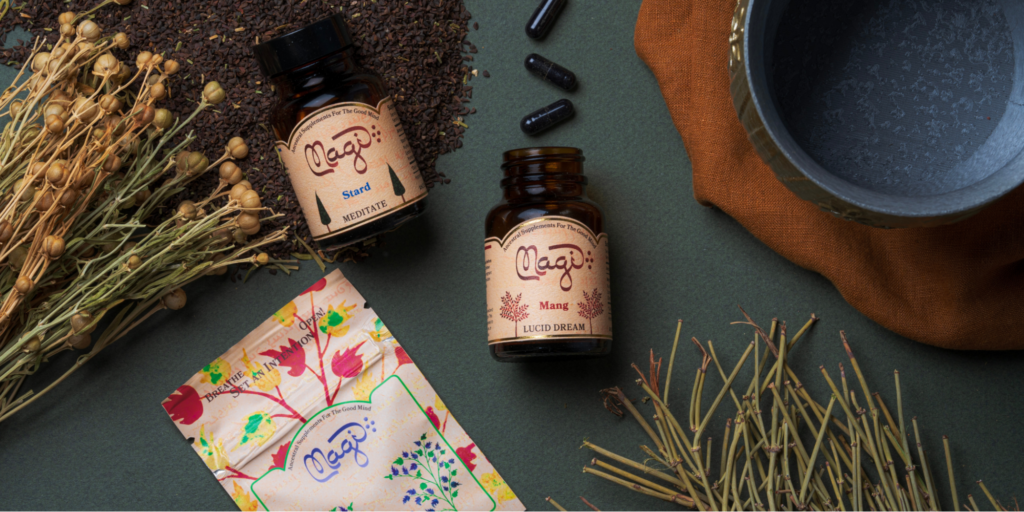
Magi Ancestral Supplements, Stard, Mang and Haoma formulations – (Plant on the left Peganum Harmala dried flower and brown seeds, Plant on the right, Ephedra twigs – known as Hoama plant in today’s Zoroastrian communities in Iran)
- Haoma Revelation Aid is our macro dose ancestral supplement and a beta-carboline formulation inspired by the original experience of ancient Haoma. This formulation needs a 12-hour preparation diet and proper set and setting, and its effect is a serene and calming dreamlike state that allows wakeful dreaming. Haoma provides visions like telepathic Remote Viewing, with lucid images of faces and places you may have never encountered. It also connects the mind to a mythical and archetypal pool, like Jung’s collective unconscious. This article shares one of Magi customers’ Haoma experiences worth reading.
Also, Jessica Denman, a US Air Force Veteran, US Federal Health IT Executive, and McKenna Academy Strategic Advisor, shares her experience of Haoma as:
“I credit Haoma Revelation Aid to a wonderful, healing experience I had where I was able to receive a release from past burdens, which brought some much-needed clarity. I can tell a huge difference in my disposition, as can others. I plan to take this supplement on a monthly regular basis to tune up and reset in this journey through life.”
Haoma is ideal to be taken in a therapeutic setting for psycho-emotional breakthroughs or spiritual insights. This product is highly recommended to wellness practitioners and psychedelic psychotherapists as it is legal and available for risk-free facilitation.
“Let’s push the psychonauts out of the way. The Oneironauts are much cooler!” – Jack Tanner
References
- Dumpert, Jennifer. Liminal Dreaming: Exploring Consciousness at the Edges of Sleep. North Atlantic Books, 2019.
- Ghibellini, Romain, and Beat Meier. “The hypnagogic state: A brief update.” Journal of sleep research 32, no. 1 (2023): e13719.
- Louchakova-Schwartz, Olga. “Intersubjectivity and multiple realities in Zarathushtra’s Gathas.” Open Theology 4, no. 1 (2018): 471-488.
- Strathern, Paul. Mendeleyev’s dream: the quest for the elements. Macmillan, 2001.
- Doss, Manoj K., Loft, K, Mason, N. L., Mallaroni, P., Reckweg, J.T., Oorsouw, K.V, Tupper, N., Otgaar, H., Ramaekers, J. G. “Ayahuasca Enhances the Formation of Recollection-Based Memory in Experienced Ayahuasca Users.” Under Review (2023)
- Naranjo, C. “The Healing Journey: Pioneering Approaches to Psychedelic Therapy.” Santa Cruz, CA: Multidisciplinary Association for Psychedelic Studies (MAPS).(Original work published 1973 by Pantheon Books, New York, under the title The Healing Journey: New Approaches to Consciousness.) (1973).
- Toro, Gianluca, and Benjamin Thomas. Drugs of the dreaming: Oneirogens: Salvia divinorum and other dream-enhancing plants. Simon and Schuster, 2007.
- Kaasik, Helle, Rita CZ Souza, Flávia S. Zandonadi, Luís Fernando Tófoli, and Alessandra Sussulini. “Chemical composition of traditional and analog ayahuasca.” Journal of Psychoactive Drugs 53, no. 1 (2021): 65-75.
- Flattery, David Stophlet, and Martin Schwartz. Haoma and harmaline: the botanical identity of the Indo-Iranian sacred hallucinogen” soma” and its legacy in religion, language, and Middle-Eastern folklore. Vol. 21. Univ of California Press, 1989.
- Malandra, William W., ed. An introduction to ancient Iranian religion: Readings from the Avesta and Achaemenid inscriptions. Vol. 2. U of Minnesota Press, 1983.
- Davide Tanasi, Branko van Oppen de Ruiter, Fiorella Florian et al. Ritual revealed: psychotropic substances in a Ptolemaic Egyptian vase, 31 May 2023, PREPRINT (Version 1) available at Research Square [https://doi.org/10.21203/rs.3.rs-3000218/v1]

